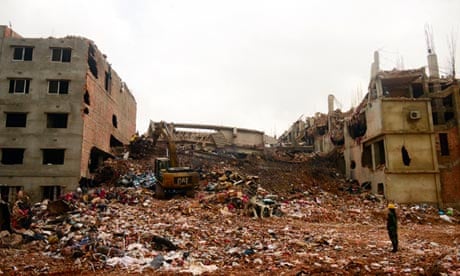The death toll from the collapse of a shoddily built garment-factory building in Bangladesh continued its horrifying climb, reaching 580 on Sunday with little sign of what the final number will be.
The 24 April disaster is probably the worst garment-factory accident ever. There have been few industrial accidents of any kind with a higher death toll.
New York's Triangle Shirtwaist factory fire killed 146 workers in 1911, and more recently a factory fire in 2012 killed about 260 people in Pakistan. Another fire in Bangladesh the same year killed 112.
Government officials say substandard building materials, combined with the vibration of the heavy machines used by the five factories, led to the collapse.
The building developed cracks a day before the collapse and the owner, Mohammed Sohel Rana, called an engineer, Abdur Razzak Khan, to inspect it. Khan appeared on television that night and said he had told Rana the building should be evacuated.
Police also issued an evacuation order, but witnesses say that hours before the collapse Rana told people that the building was safe and factory managers told their workers to go inside.
Rana has been arrested is expected to be charged with negligence, illegal construction and forcing workers to join work, crimes punishable by a maximum of seven years in jail. Authorities have not said whether more serious crimes will be added.
Khan was arrested as well. Police said he worked as a consultant to Rana when three floors were added illegally to what was supposed to be a five-storey building.
The government promised to make the garment industry safer after the November factory fire that killed 112 people, saying it would inspect factories for safety and pull the licenses of those that failed. That plan has yet to be implemented.
Bangladesh's $20bn (£13bn) garment industry supplies retailers around the world and accounts for about 80% of the impoverished country's exports. The collapse has raised strong doubts about retailers' claims that they could ensure worker safety through self-regulation.
The country is popular as a source of clothing largely because of its cheap labour. The minimum wage for a garment worker is $38 a month, after being nearly doubled this year following violent protests by workers. According to the World Bank, the per capita income in Bangladesh was about $64 a month in 2011.
